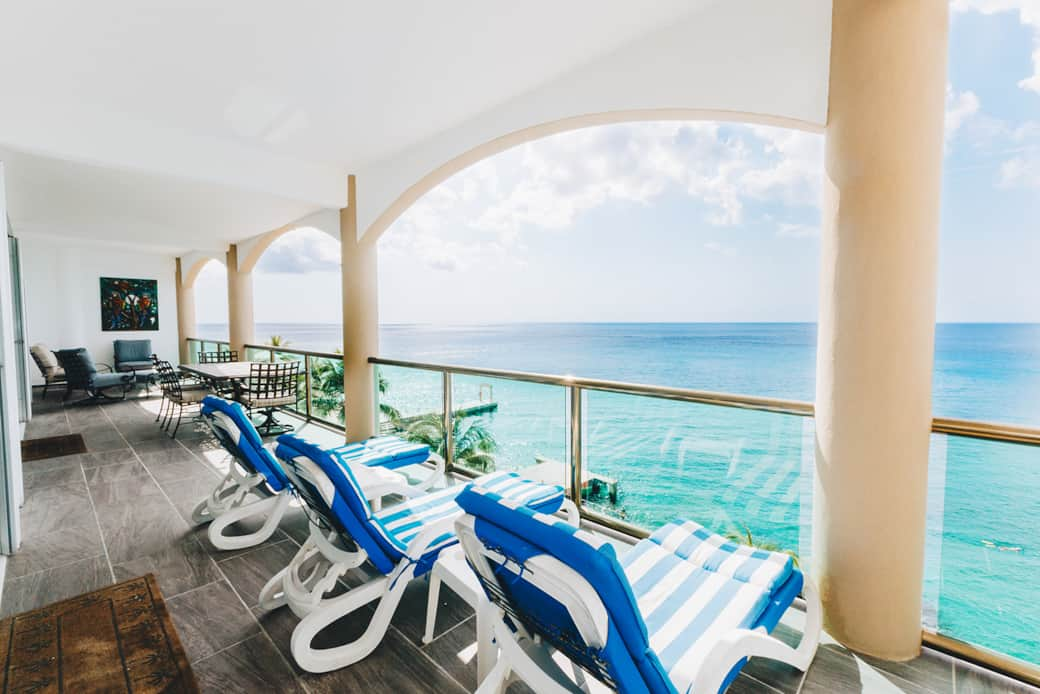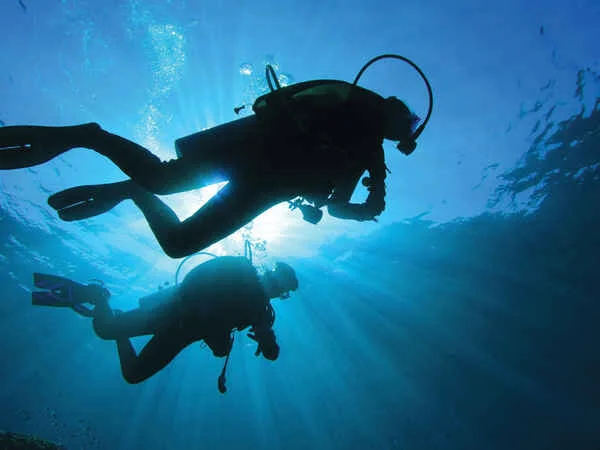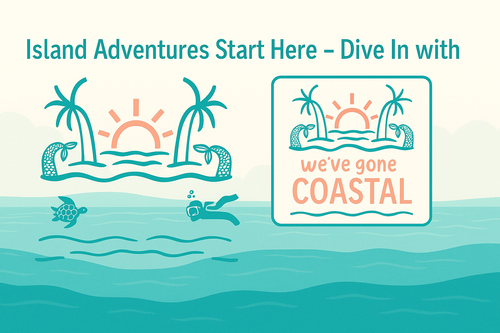Discover the Best Diving in Cozumel: A Guide for Adventure Seekers
Why Cozumel Diving is Unforgettable
Diving in Cozumel is unique for many reasons! Divers return year after year for its crystal-clear waters, thriving marine life, colorful coral reefs, fascinating history, and easy accessibility. With so much to offer, it's no wonder that Cozumel is a popular destination for diving enthusiasts from all over the world!
Whether you are a seasoned diver or just starting out, Cozumel offers experiences you will remember forever. Here are some of the top reasons this island tops our list.
Cozumel is so easy to access from the US, that it’s often overlooked as a prime dive location but it’s truly become one of our favorite places in the world! Here are our favorite things about Cozumel diving-
Cozumel Diving Highlights
Crystal Clear Waters
Visibility can reach up to 150 feet, making it easy to enjoy Cozumel’s intricate coral formations, fascinating fish species, and other underwater wonders.
Diverse Marine Life
Home to more than 500 species of fish, 60 species of coral, and hundreds of mollusks, marine mammals, algae, and seagrasses, Cozumel offers something new every dive. Encounters often include sea turtles, nurse sharks, green moray eels, and majestic eagle rays during their migration season.
Abundant Coral Reefs
Cozumel is part of the Great Mayan Reef, the second largest coral reef in the world. Most dive sites lie within the protected Arrecifes de Cozumel National Park. You will find everything from dramatic walls to gentle slopes, all teeming with life.
Rich History
Once a stop for Spanish galleons, Cozumel’s waters now host one of Mexico’s best-known wrecks (the Felipe Xicoténcatl C-53) alongside sprawling coral gardens and deep walls.
Convenient Location
Located just off Mexico’s Yucatán Peninsula, Cozumel is easy to reach from the US and offers world-class diving right off the coast.
🌴 Ready for an adventure? Discover things to do in Cozumel from snorkeling to ATV adventures and more! 🏖️
Explore Things to Do in Cozumel 🌊🌊 Unique Things About Cozumel Diving
- Famous for drift diving
- Visibility up to 150 feet
- Ideal for beginners and advanced divers
- Second largest barrier reef in the world
- More than 500 species of fish and 60 types of coral
- Dive sites located just off the coastline
Cozumel Dive Sites Directory
Each site below includes key details, marine life highlights, and my personal notes. For even more insider tips, check my Cozumel Travel Guide and individual dive shop reviews linked at the bottom.
📋 Download the Printable Packing Checklist
🧳 Your Beach Vacation Packing Guide
Make packing for paradise a breeze. Download or screenshot this checklist before you travel so you’re ready for island time from the moment you arrive.
Palancar Reef
Depth: 20 to 100 ft
Current: Mild to moderate
Best For: All levels
One of Cozumel’s most famous dive locations, Palancar has multiple sections worth exploring:
Palancar Caves - Towering tunnels, caverns, and swim-throughs with abundant marine life including turtles, reef sharks, eagle rays, grunts, and snapper. Depths 50 to 120 ft, intermediate level.
Palancar Bricks - Named after a barge that spilled red bricks here in 1950. Look for turtles, southern stingrays, nurse sharks, and eagle rays in winter. Depths 30 to 90 ft.
Palancar Garden (Dory’s Favorite) - Extremely healthy coral with camouflaged fish and macro subjects in the shallows. Mild current, depths 30 to 80 ft.
Columbia Reef
Depth: 30 to 90 ft
Current: Variable, can be strong
Best For: Intermediate to advanced divers
Two main dive areas:
Columbia Deep – Towering coral pinnacles six stories high with mazes of swim-throughs and excellent clarity. Possible sightings: grouper, turtles, barracuda, blacktip sharks. Depths 60 to 120 ft.
Columbia Shallows - Colorful coral heads in 25 to 50 ft of water, popular with snorkelers and perfect for a relaxed second dive.
Yucab
Depth: 40 to 50 ft
Current: Moderate
Best For: All levels
Located right in front of Costa del Sol, this site can be seen from our We’ve Gone Coastal Villa. Packed with colorful sponges, splendid toadfish, and schooling reef fish. Great for photography.
Paradise Reef
Depth: 30 to 40 ft
Current: Mild
Best For: Beginners, night diving
Gentle slopes and vibrant coral heads make this a perfect second tank or night dive. Look for spotted drum, moray eels, spiny lobsters, parrotfish, and the occasional barracuda.
Santa Rosa Wall
Depth: 50 to 120 ft
Current: Mild to moderate
Best For: Intermediate to advanced divers
🌴 Explore Cozumel Like a Local
Discover the ultimate guide to Cozumel’s hidden gems, top beaches, and the best local spots. Whether you’re here for relaxation or adventure, we've got you covered.
Start Your AdventureOne of Cozumel’s signature dives with a dramatic vertical drop-off, large sponges, and seasonal eagle ray sightings. Explore overhangs and keep an eye out for turtles, grouper, and angelfish.
Chankanaab Park
Depth: 35 to 40 ft
Current: Usually mild
Best For: Beginners, night diving
A sandy bottom with coral heads and smaller reef fish. Good for spotting moray eels, lionfish, and crabs. Located near the C-53 wreck.
Paso del Cedral (Cedar Pass)
Depth: 60 to 80 ft
Current: Moderate to strong
Best For: Intermediate divers
Fast drifts past coral heads packed with parrotfish, grunts, snapper, lobsters, moray eels, and nurse sharks. Small caves hide even bigger surprises.
Shipwreck C-53
Depth: 50 to 80 ft
Current: Moderate to strong
Best For: Advanced divers
A 154-ft WWII minesweeper intentionally sunk in 2000. Sits upright with plenty of opportunities to explore inside. Lobsters, eels, barracuda, and snapper frequent the wreck.
Devil’s Throat
Depth: 60 to 100 ft
Current: Variable
Best For: Advanced divers
A narrow swim-through that opens into a cavern. Dark, dramatic, and unforgettable.
🧳 Your Beach Vacation Packing Guide
Make packing for paradise a breeze. Download or screenshot this checklist before you travel so you’re ready for island time from the moment you arrive.
📥 Download Packing Checklist📖 Read the Blog Post for Additional Tips & Recommendations
Affiliate Disclosure
Some links in this post are affiliate links, meaning We’ve Gone Coastal may earn a small commission at no extra cost to you. As an Amazon Associate, we earn from qualifying purchases. We also participate in the Travelpayouts program. We only recommend products and services we use or trust. Your support helps us keep sharing free dive guides like this.

Oceanfront Villa at Costa del Sol
Steps from the beach with a private pool, 4 master suites, and dreamy sunset views.
See the Villa

Luxury Condo at El Cantil
Downtown convenience with a private hot tub, infinity pool, and walk-to-everything location.
See the Condo
💙 Planning your trip to Cozumel?
Book your stay with We've Gone Coastal — sunset views, beach access, and barefoot bliss await.
👉 Book Direct & Save
📸 Follow us on Instagram
💙 Follow us on Facebook








